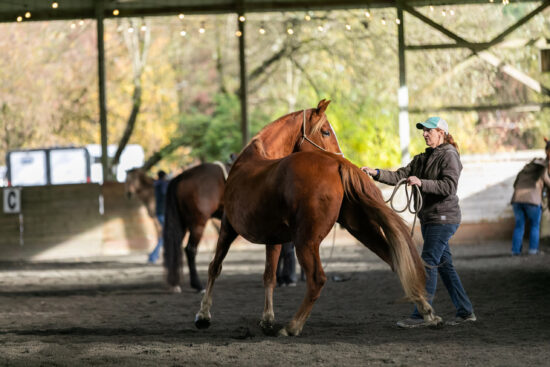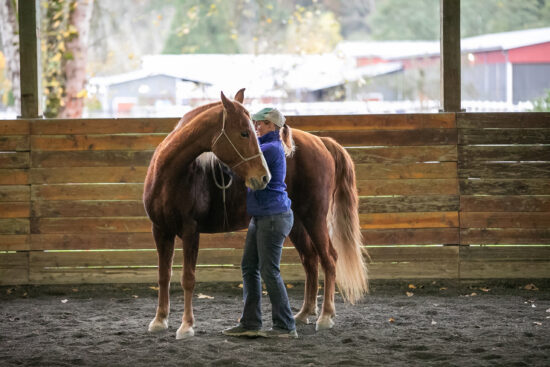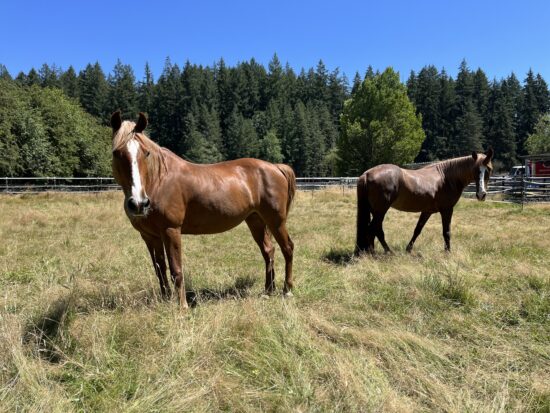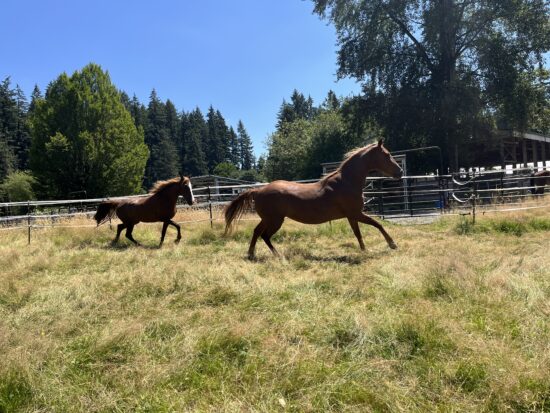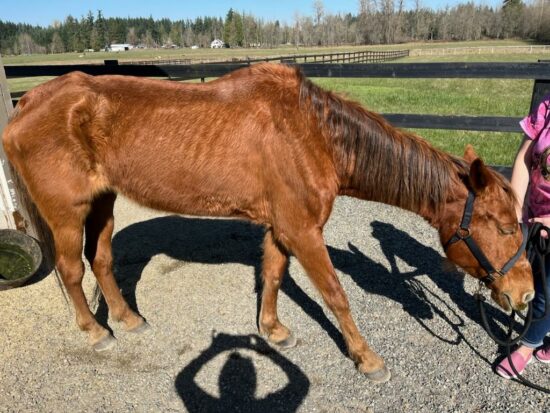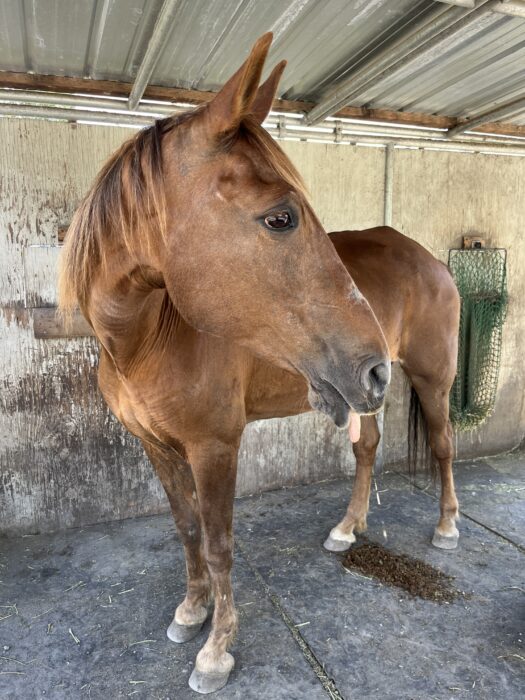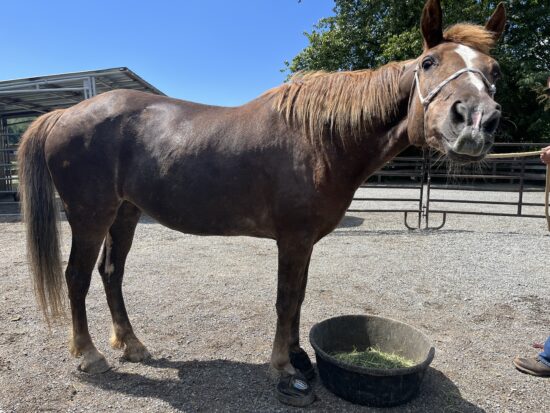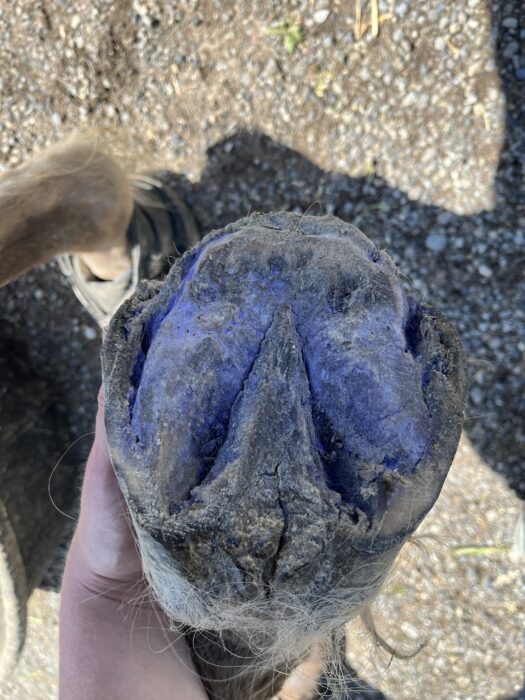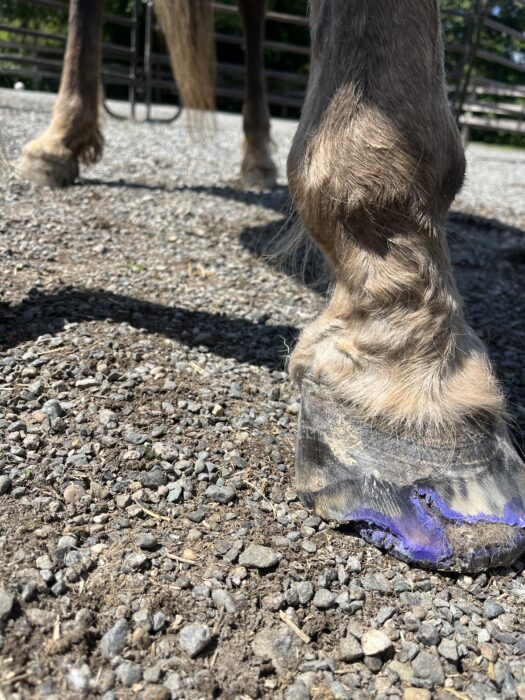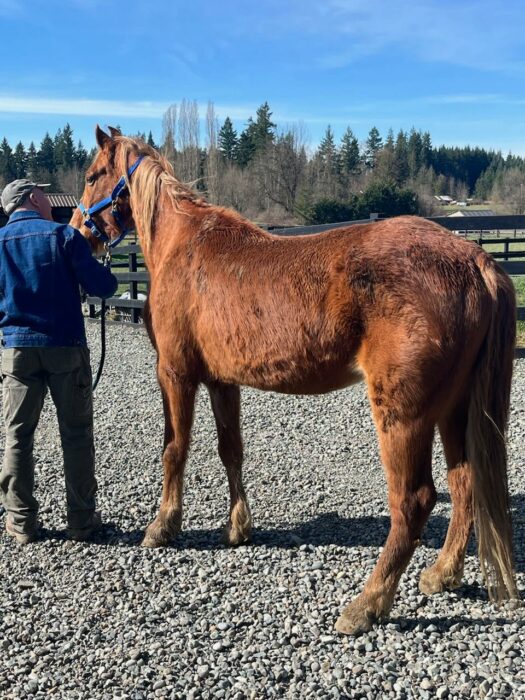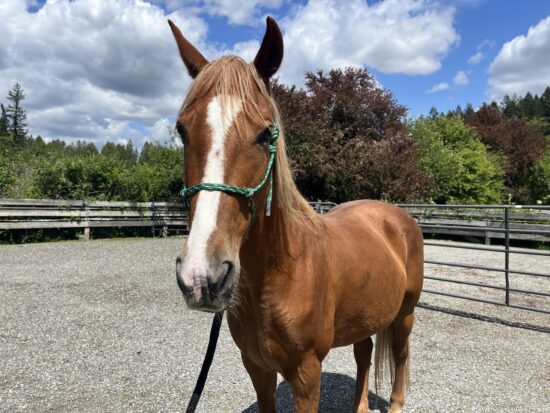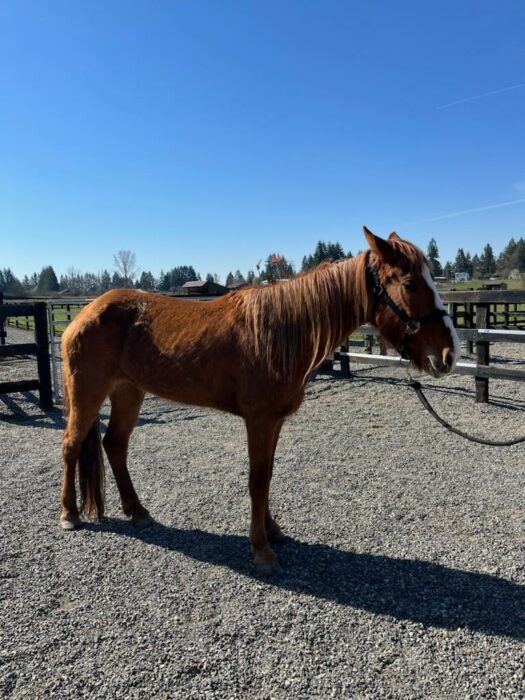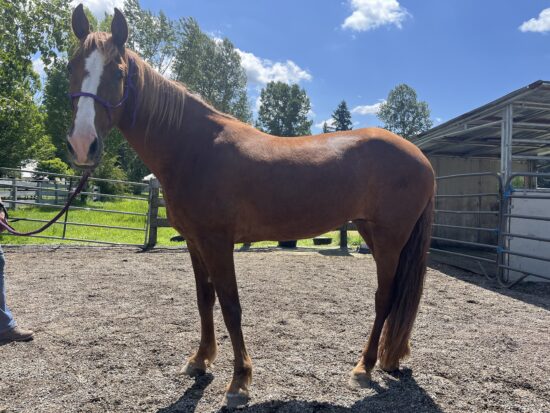Cleopatra
2004 Tennessee Walking Horse Mare
Suitability: Companion, For Intermediate Handler
Color: chestnut
Markings: blaze
Height: 15.0 hh
Weight: 950 lbs
Adoption Fee: TBD
Cleopatra was part of a four horse Pierce County Animal Control seizure in early 2024. Cleo was in the best shape of the four because of her food aggressive nature, but this is a relative term — she was still quite thin and lacking in basic care. Thanks to the work of Pierce County, her foster, and the vets at Tacoma Equine, Cleo is looking much improved from the condition she was first seen in. Now at SAFE, Cleo is continuing her rehabbing and is settling in well.
We are uncertain if she has been ridden in her past, but signs point to ‘no.’ But on the ground, Cleo is sweet and has proven to be a tremendously fast learner. She is ready to meet adopters and make her way to her forever home!
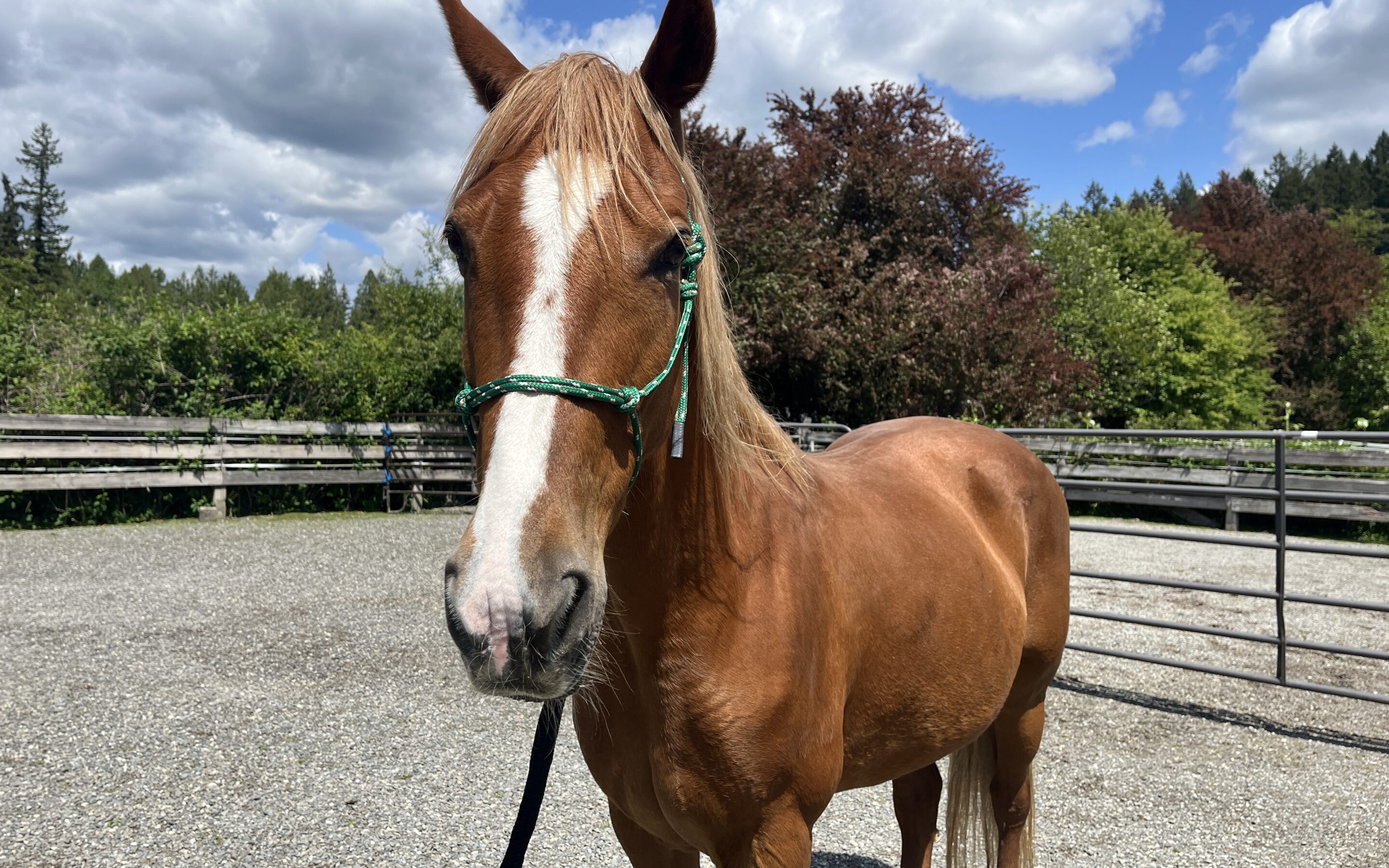
Adopting a Companion Horse from SAFE
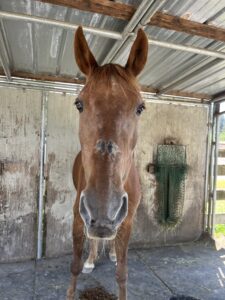 If you adopt a companion horse from SAFE, we will sign a contract ensuring you that when the time comes to say goodbye, we will cover the costs of what needs to be done. Your lucky horse will come to you fully rehabilitated and up to date on all routine vet care, with an established feeding plan and an honest behavioral assessment. All we ask in return is that you carry on their good care, and let them know every day that they are home.
If you adopt a companion horse from SAFE, we will sign a contract ensuring you that when the time comes to say goodbye, we will cover the costs of what needs to be done. Your lucky horse will come to you fully rehabilitated and up to date on all routine vet care, with an established feeding plan and an honest behavioral assessment. All we ask in return is that you carry on their good care, and let them know every day that they are home.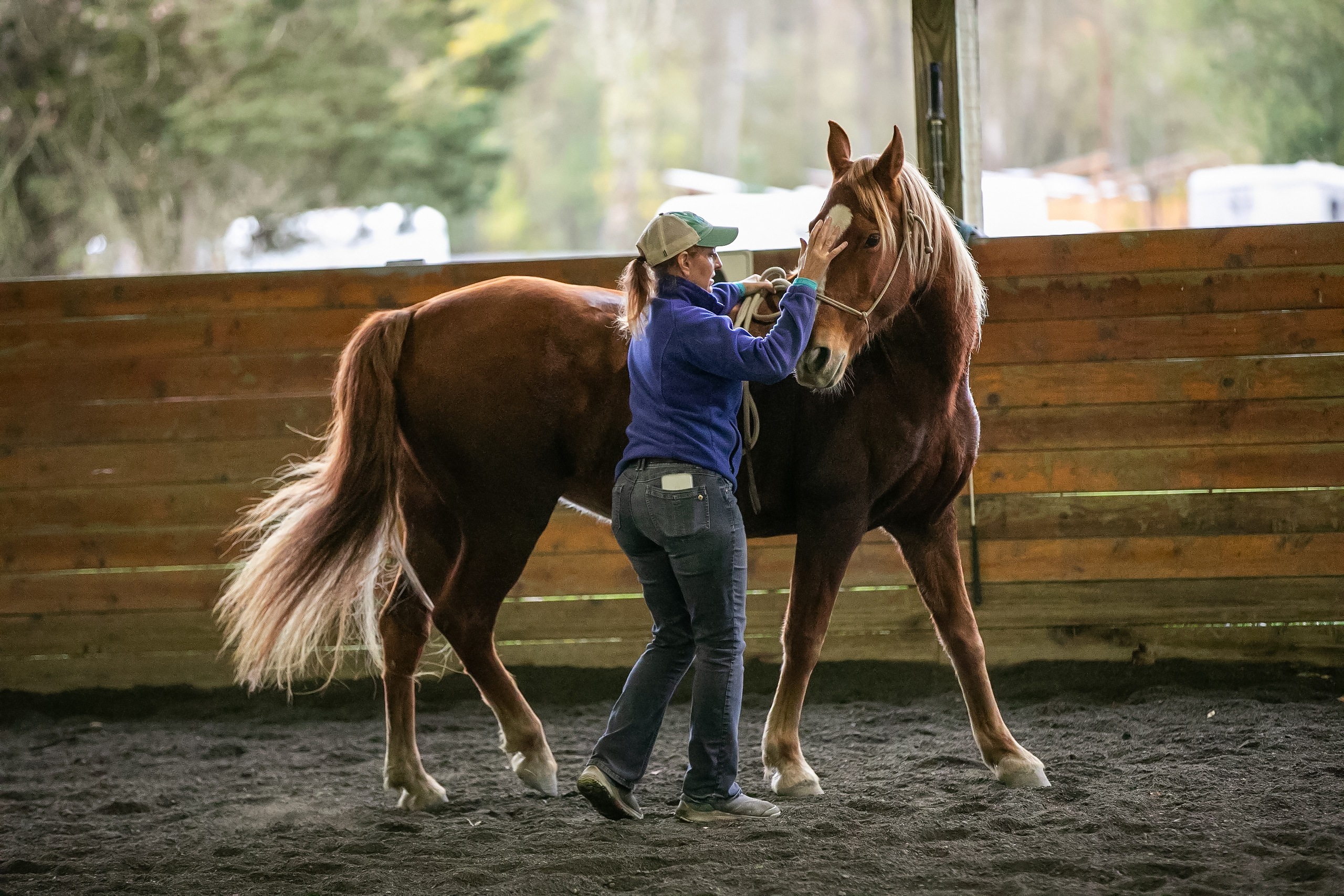
October Joel Conner Clinic Report: Cleopatra
Kirsten L has been working with Cleopatra on the ground, and partnered alongside her for Cleo’s first Joel Conner clinic back in October. Here’s her report on working alongside Cleo:
“When you first meet Cleopatra, give yourself a few moments to ensure that you have the correct horse. Cleo and Déjà vu are nearly identical so find any detail that you can to tell them apart. Some significant indicators can help such as the side that their mane lies on, the color of their tail and the spot of chestnut in their white blaze. Good luck with this first step! I too was challenged and once told “Cleo” that she had the wrong tail on when I had accidentally caught Déjà vu.
Speaking of which, catching her in her paddock has improved greatly, so much so that now I can walk straight up to her. In the past, it was necessary to move her forward and draw her in prior to approaching her as she was reluctant to being caught.
In our first Joel Clinic together this past October, Cleo made it clear to me that I had a lot to learn particularly about supporting her while feeling herd bound. Keeping her with me took consistent attention and the ability to both ask her to move and then creating a sense of peace when she was with me. It was like she was asking for two things at the same time; to return to her paddock with Déjà vu and also to try as hard as she could to connect with me. The focus of our time together centered also on having her respond at the level that she was being asked.
This lovely mare works very hard at trying to please. You will not mistake the fact that she also has an incredibly sweet demeanor, just like her herd mate!”
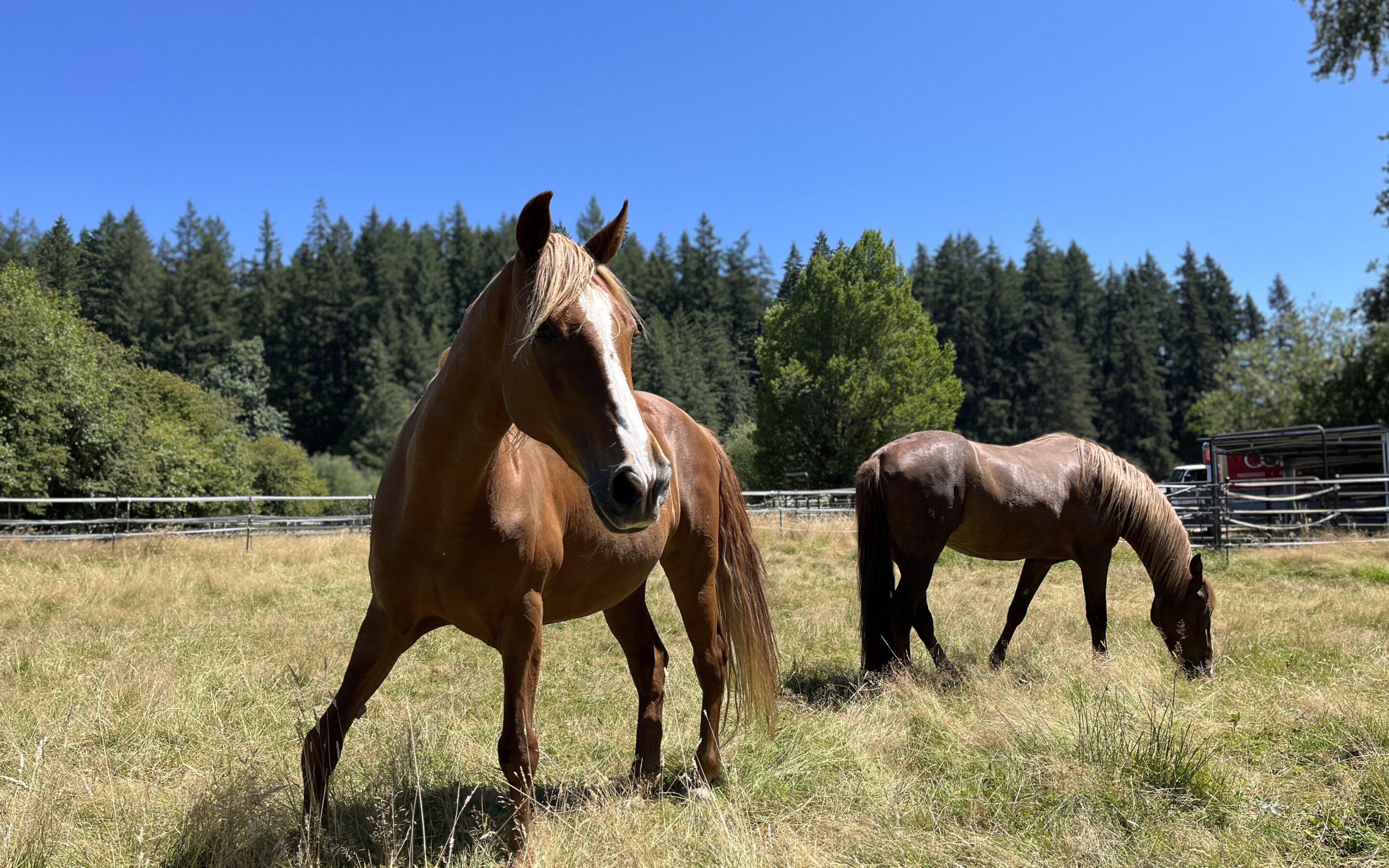
Cleo and Deja on Grass
There are many aspects of horse rescue that are rewarding, but one of the best feelings has to be seeing a horse, who you know was previously underfed, now turned out on grass looking happy (and perhaps even a bit on the fat side!) Cleopatra and Deja Vu are two such horses. We know they came from a situation of neglect and starvation, so to see them frolic and feast out in the field is an instant dose of dopamine.
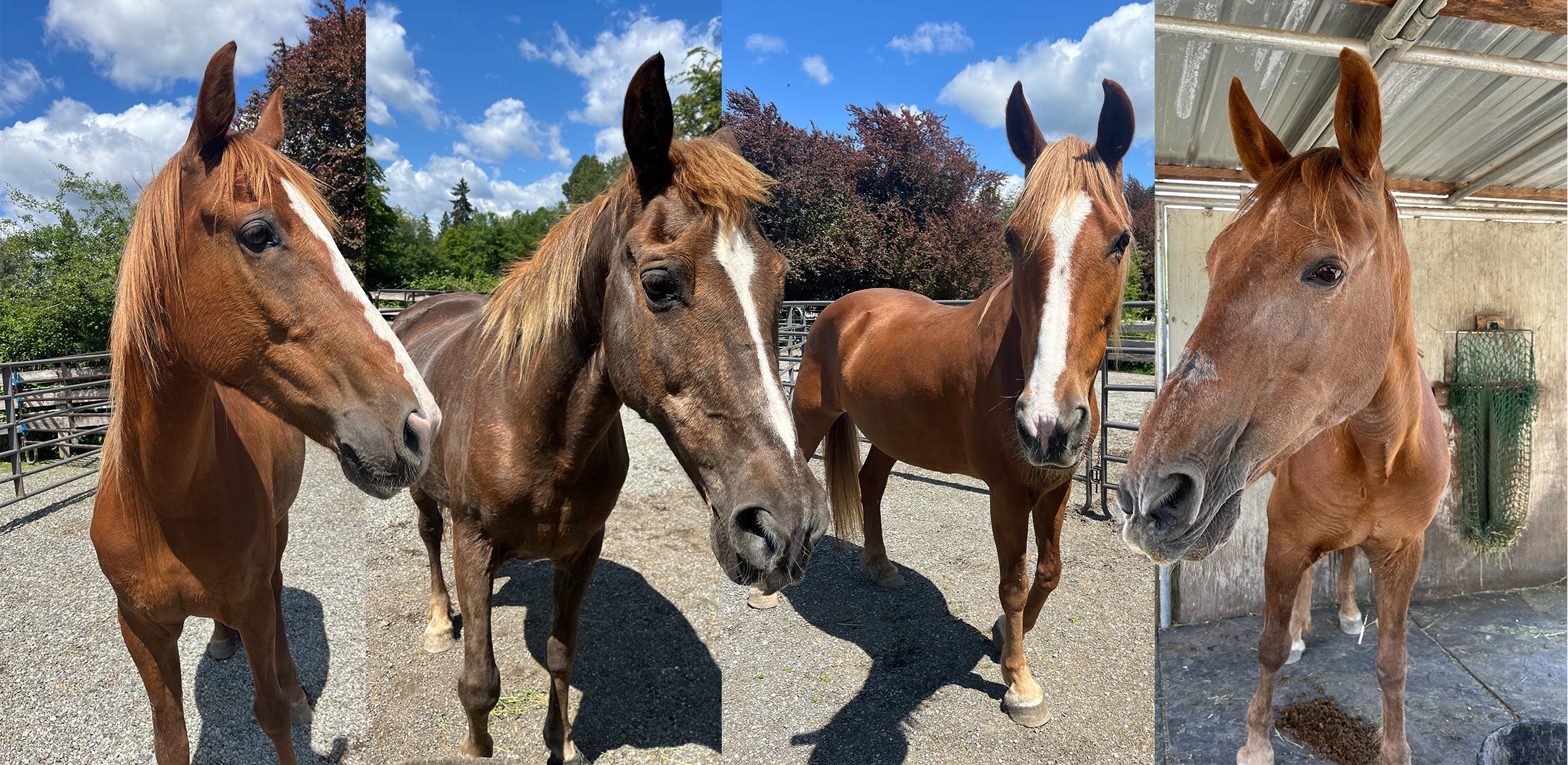
Walkin’ Into SAFE: Zuri, Bailey, Cleopatra, Deja Vu
Four new mares Tennessee walked into SAFE last week: Zuri, Bailey, Cleopatra, and Deja Vu.
Their story is one of neglect, as is so often the case with our new intakes, but as they were seized by out friends down at Pierce County Animal Control, they have been in very good hands since they were first rescued. The girls were all tremendously thin before they were taken, with body condition scores in the 1–3 range. Cleopatra, who was in the best shape (a relative term), had only held on to her little bit of extra weight by being food aggressive. No horse should have to fight for a meal.
For the last few months, they have been rehabbing down south, but last Friday made the trek up to SAFE. So far, everyone has been settling in well here, enjoying at least five meals a day, and getting to know the routine and the volunteers who already adore them.
Zuri and Bailey are the two matrons of the group, neither a stranger to being handled. Word is that they were show horses, once upon a time, and they do have a ‘been there, done that’ worldliness about them.
Zuri is likely 30, and was in some of the worst shape of them all. She has gained a significant amount of weight over the course of her time at foster, but there is still visible evidence of her pointiness. She has a history of colic, so we are keeping a close eye on her eating and bathroom habits (a standard across the new intake board, of course, but something that we are making sure to pay extra attention to given what we know). She is so far curious and friendly, and will greet you vocally — especially if you come with food.
Bailey is also 30 or above, and has a history of laminitis that has led to some significant rotation in her front feet, particularly her left. Bailey’s hooves were in terrible condition in general, so managing her overall comfort has been a high priority. She has been living in soft ride boots, and taking daily equioxx, both of which have been helping some. But she doesn’t let her feet stop her from being a sassy lady!
During her intake photoshoot, Bailey was quick to remind us that she would much rather be chowing down on her alfalfa, thanks very much. She is a hoot!
Cleopatra is 20, and as previously mentioned, looks the best out of the four. Despite her food aggressiveness with other horses however, she is rather shy around humans. While she does allow you to halter and touch her all over, she is clearly uncertain at times. It will be wonderful to see her come out of her shell a little once she settles in more here at SAFE.
Deja Vu, so named because of her physical similarity to Cleopatra, follows her doppleganger’s personality thru-line as well, being perhaps the most wary of the group. Still, she is not untouchable by any means, and allows for haltering and blanketing, but is definitely hyperaware of everything that is happening. Though we do not know if Cleo and Deja have riding backgrounds, signs point to ‘no.’
All four ladies are settling in well at SAFE, where they are growing used to the rhythms of this place. One thing is for sure, they already know the sound of the food truck!
Cleopatra’s Friends:
1. Alyssa S.
2. Christy A.
3. ____________________
4. ____________________
5. ____________________
6. ____________________
7. ____________________
8. ____________________
9. ____________________
10._____________________
Every horse deserves at least ten friends! Even a small monthly donation can make a difference. Plus, SAFE horse sponsors receive discounts at local businesses through the SAFEkeepers program!
Click here to sponsor Cleopatra!

